Pictures on this page were captured from my balcony at home in Boulogne near Paris.
Equipment used is a CANON EOS300D digital reflex camera at prime focus of a MEADE LX200 8" telescope opened at F/6.3 (with 6.3 focal reducer).
At 20H53 UT , as half of the moon was in penumbra, clear sky could let think that conditions were gathered for a perfect observation of the eclipse (exposure 1/400 sec at 200 ISO).
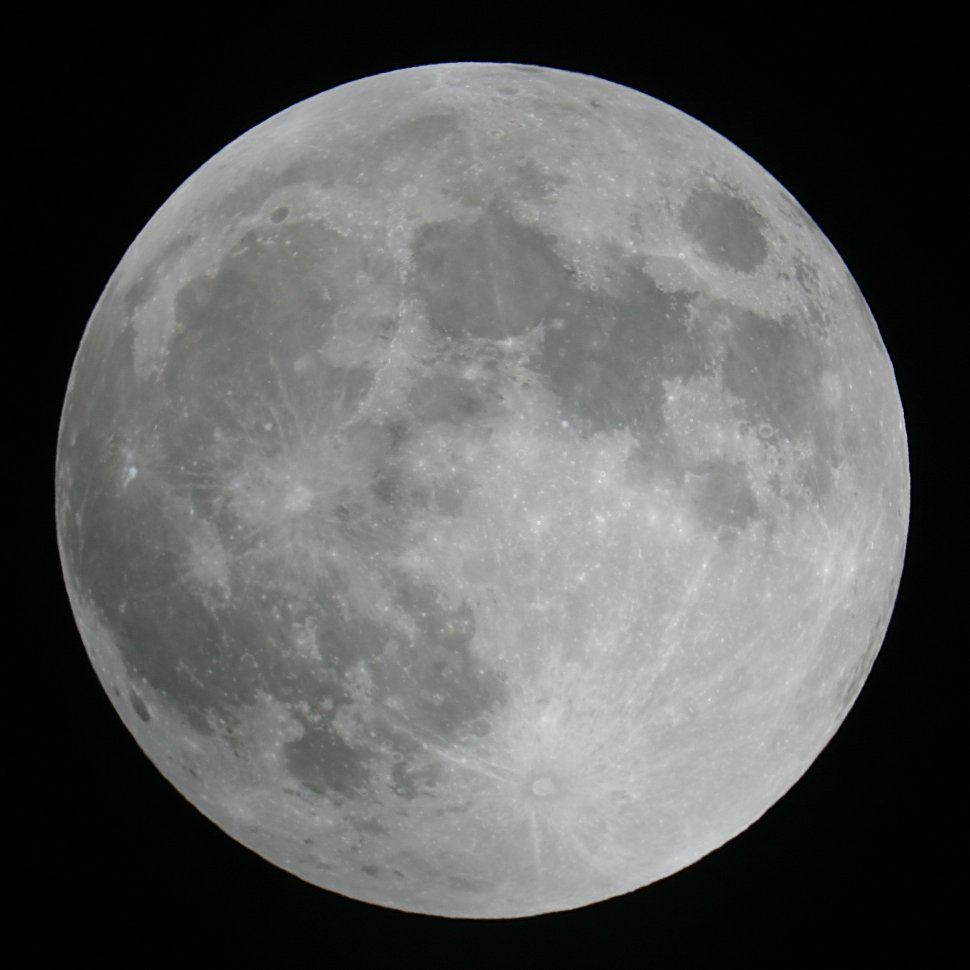 |
At 21H30 UT, first contact with earth shadow occurs. At this moment, clouds darkening the sky, force me to drastically increase exposure time (exposure 1/4 sec at 200 ISO).
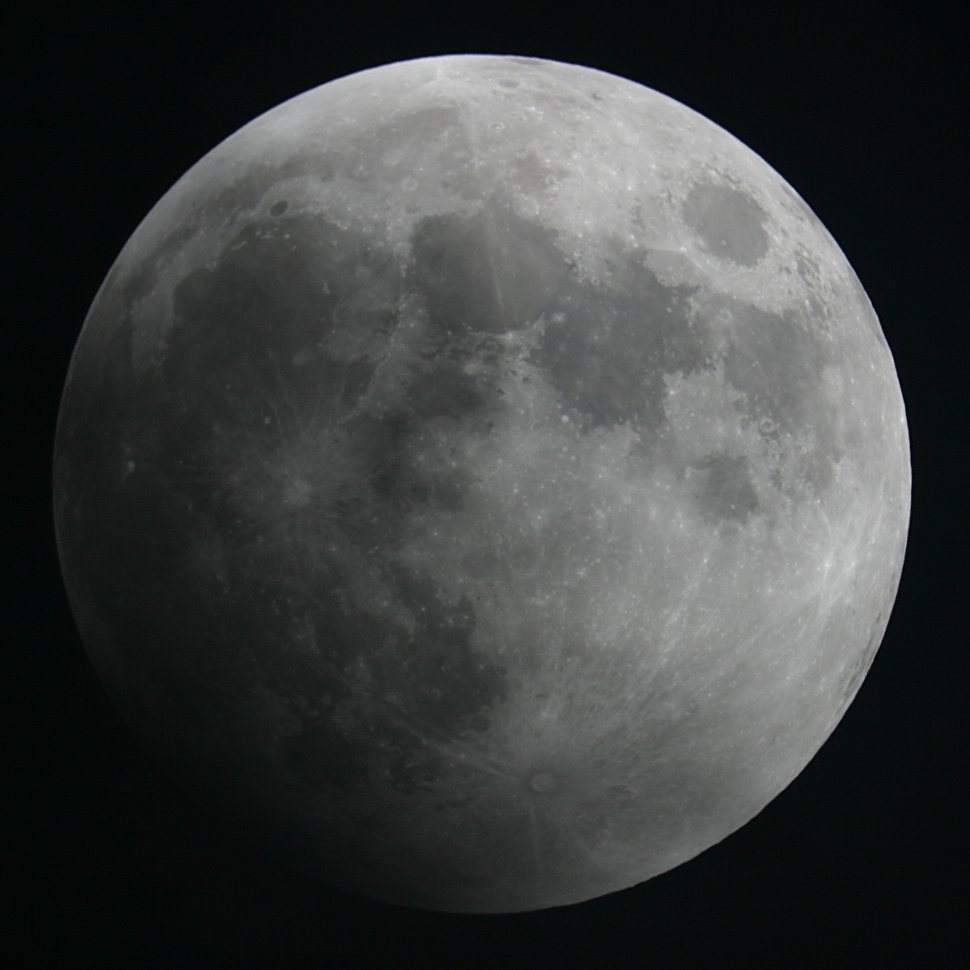 |
At 22H09 UT, half of the moon is eclipsed (exposure 1/10 sec at 200 ISO). A few minutes later, the cloudy curtain becomes totally opaque. Totality begins at à 22H44 UT over dark clouds. The worst is to be feared ....
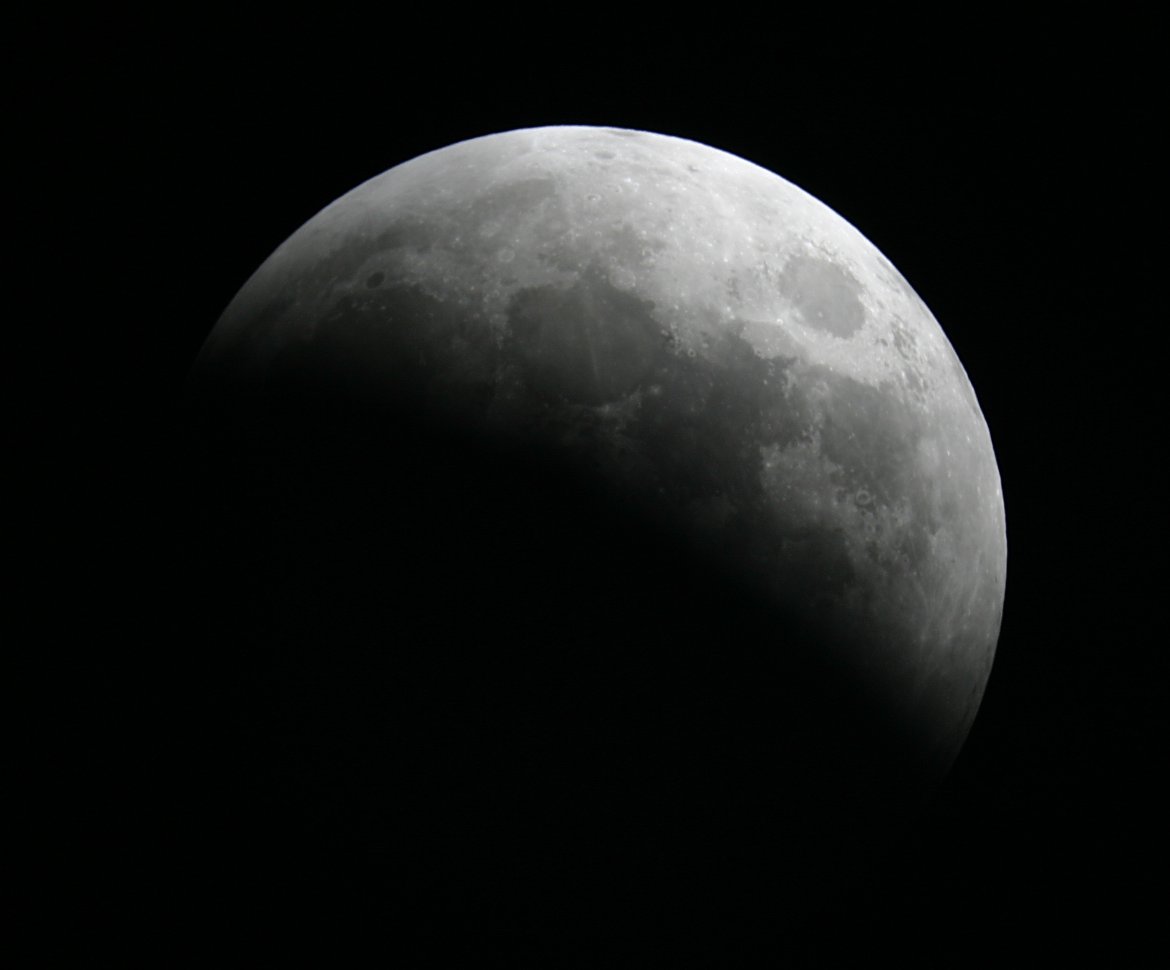 |
After 70 minutes of interminable waiting, hope is back. Finally at 23H22 UT, I can see through a cloud hole , the amazing dark orange colour. 38 minutes of totality have elpsed. This picture is captured at 23H37 UT, (exposure 10 seconds at 200 ISO) in a clear sky, 16 minutes after the eclipse maximum.
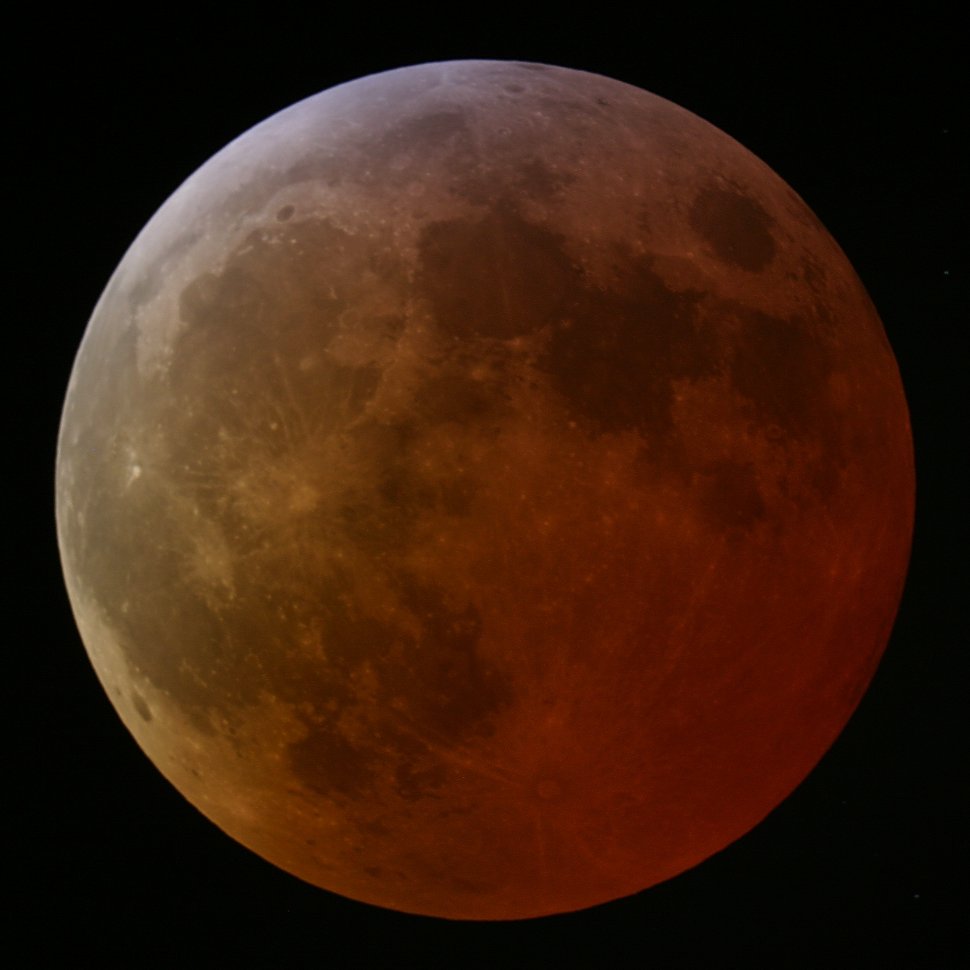 |
Totality ends at 23H58 UT. This picture is captured 3 minutes later at 0H01 UT on following day (exposure 3.2 sec at 200 ISO).
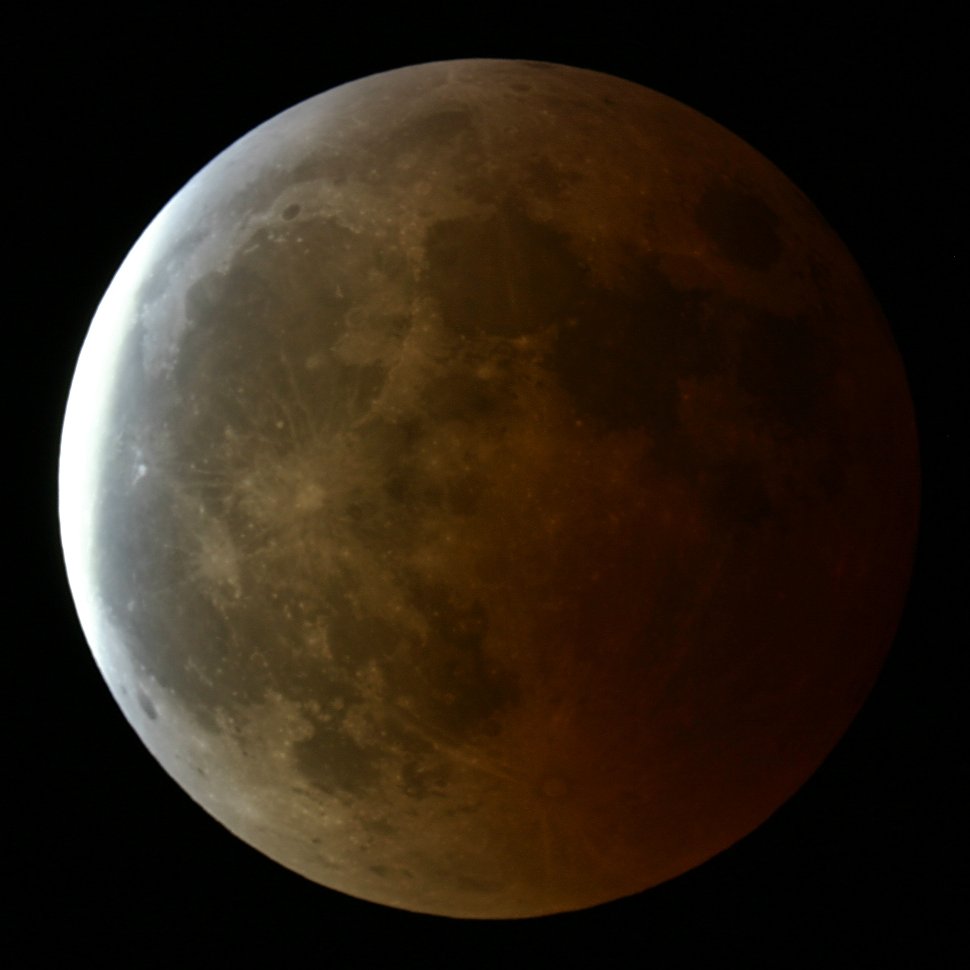 |
At 0H35 UT, only half of the moon remains eclipsed (exposure 1/160 sec at 200 ISO).
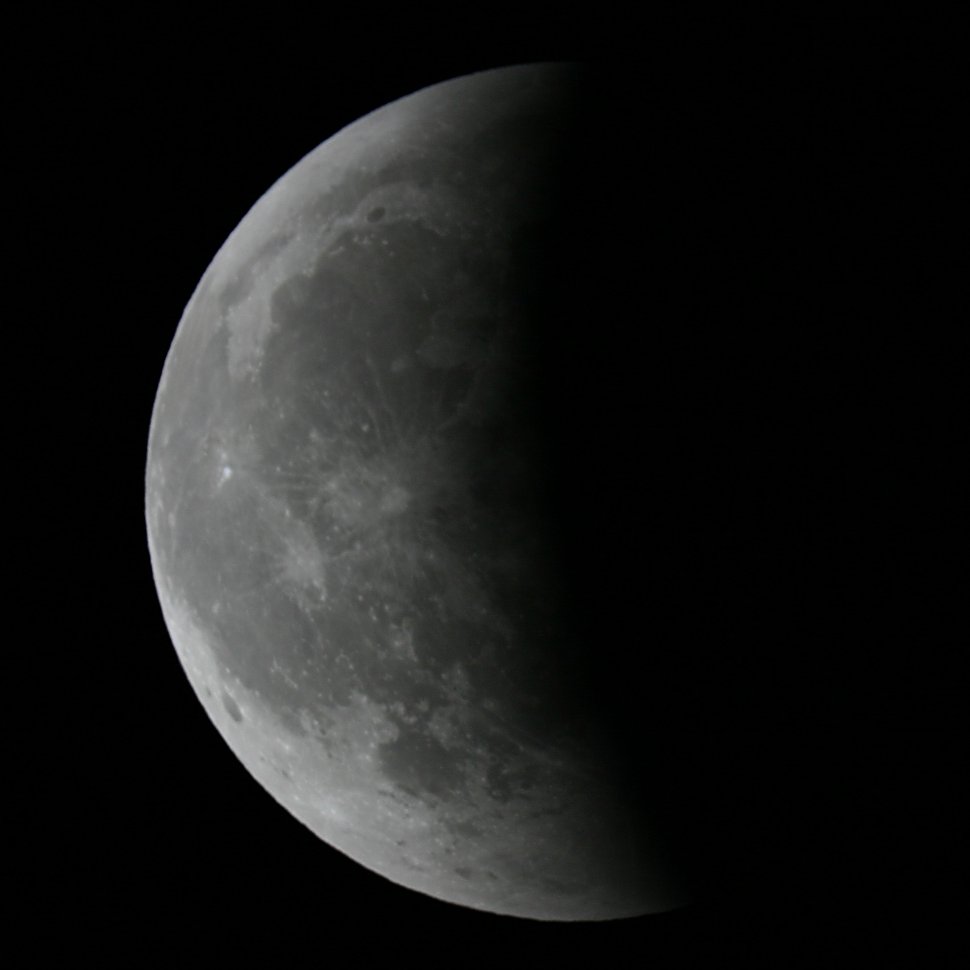 |
Last contact with earth shadow occurs at 1H11 UT. This pictures is captured 4 minutes before this last contact, at 1H07 UT (exposure 1/160 sec at 200 ISO).
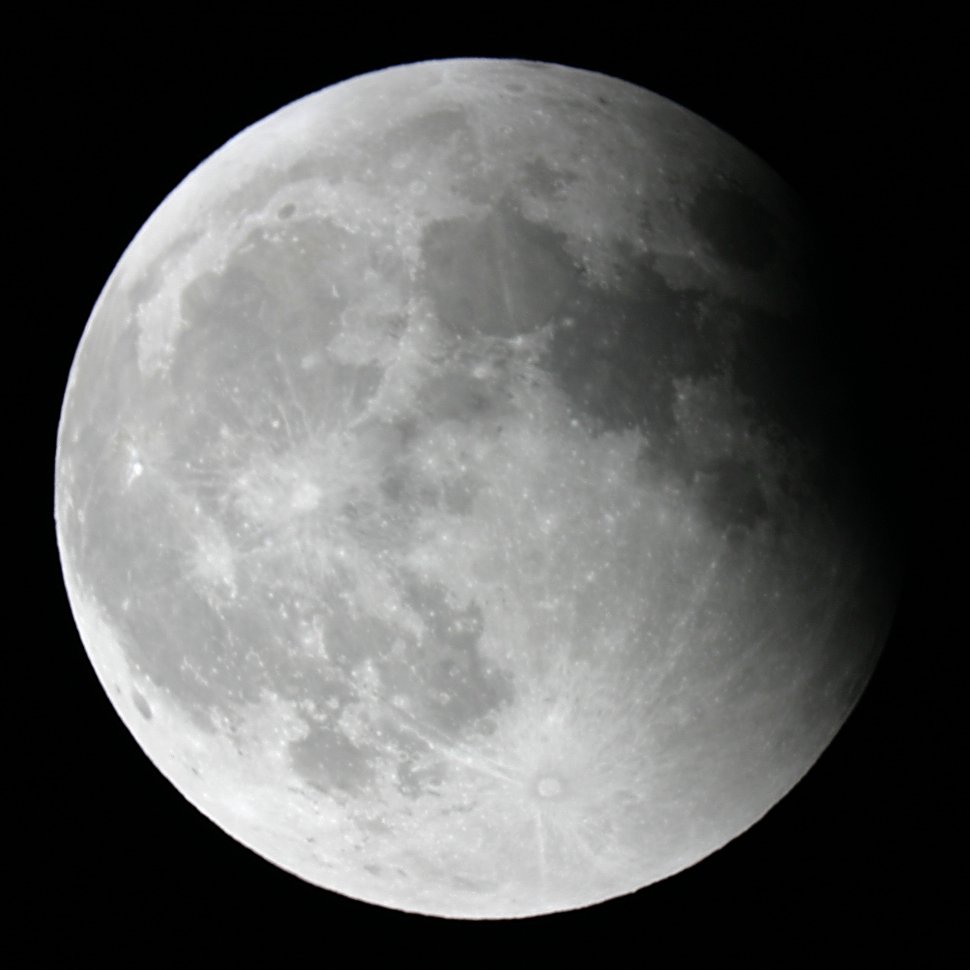 |
This assembly materializing earth shadow, is made of three pictures captured from right to left, at 22H02 UT, 23H22 UT and 0H40 UT. The three positions of the moon are calculated using celestial coordinates of the moon and of the antisolar point. Horizontal edges of this picture are supposed parallel to the equatorial plane.
 |
220 minutes have elapsed between the 2 frames of this movie. First contact and last contact occur respectively on left side and right side. As earth rotates, the moon is observed in 2 different directions (parallax).